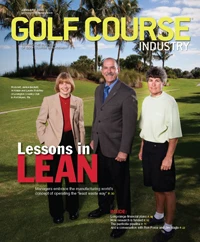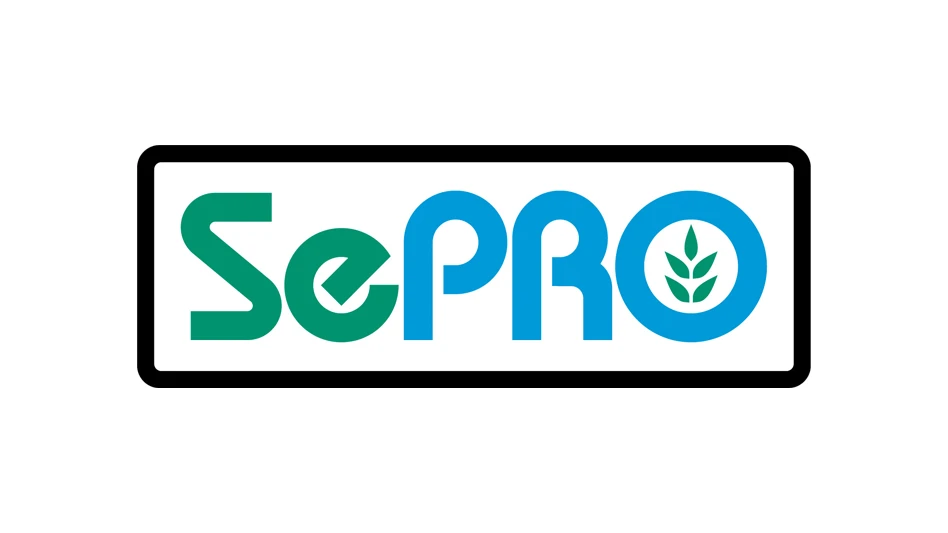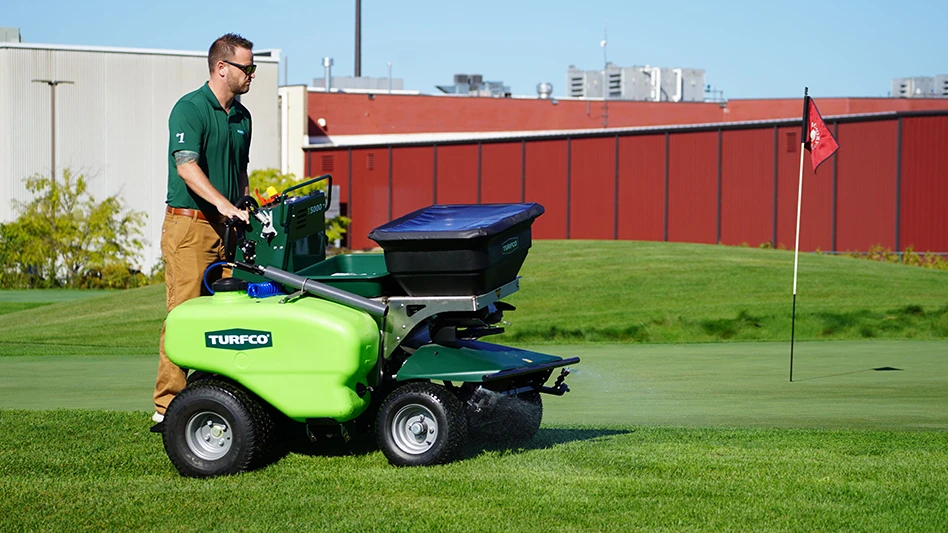With a background that includes four years working for an equipment dealership, Darak Bigler, equipment manager at Circling Raven Golf Club in Worley Idaho, supports golf course superintendent Brian Woster in conducting a lot of research before making any purchasing decisions on handheld products.
“At most courses, the superintendent has the final say, but most superintendents will leave it up to the equipment manager to do research and give them a couple of options,” Bigler says.
Bigler, who has been at Circling Raven for seven years (he was on staff for the grow-in before the course opened in 2003), may be in the market soon for an entire fleet of handheld equipment.
Aside from phasing out several John Deere string trimmers that came with an initial equipment package, Bigler hasn’t had to replace one piece of handheld equipment yet. And he’s only had to rebuild two – one backpack blower and one string trimmer. Sooner or later, though, he knows the time will come when repair costs offset replacement costs, and he’ll be in the market for a new fleet.
His ongoing research includes field testing equipment, shopping around equipment and parts prices, and interacting with manufacturers to learn about new technology.
Bigler and his full-time, year-round assistant do most of the handheld equipment testing themselves. They’ll attend dealers’ open houses or request demo products, which they put to use in actual conditions on Circling Raven’s 18 holes.
“When it comes to handheld equipment, I definitely like to run it and examine everything,” Bigler says. “There’s a lot involved – horsepower, weight, operator comfort. There’s a fine line between equipment that’s a bit cheaper, but not durable enough.”
When Bigler requests demo equipment, he’ll have the maintenance crew test the pieces and ask them if they like it or not.
Circling Raven currently operates a mix of product lines, including a Tanaka walk-behind edger and several backpack blowers; several RedMax backpack blowers, string trimmers and reciprocators; two Husqvarna chain saws; two Stihl pole pruners; and five Allen hover mowers.
“When they bring a piece of equipment in, we’ll ask, ‘Is there anything you don’t like about it?’” Bigler says.
Because Bigler doesn’t operate with a throw-away mentality – he rebuilds equipment whenever possible – parts prices weigh heavily on his decision.
“I’ll always shop around – it doesn’t matter if it’s equipment or nuts and bolts,” he says, noting he values dealer support but knows he often can get a better rate by buying direct from the manufacturer or through a niche distributor.
For example, Bigler prefers to buy bearings from a bearing house rather than a dealership.
There’s no set rule for how Bigler makes repair-or-replace decisions. He considers each piece on a case-by-case basis. For example, rebuilding the backpack blower and string trimmer cost about $100 in parts and two man-hours each. That’s not bad for equipment that costs $300 to $400 to replace, he says.
“When you tear down a piece of equipment, you have to figure out if it’s going to be worth your time in labor and parts to rebuild it,” he says. “If it’s $200 in parts and four to five hours of labor, is that justifiable? It depends on the workload in the shop.”
During the past year, a new “tag-in/tag-out” policy has lessened the amount Bigler spends to repair equipment by an estimated $2,000.
The course has a sectional maintenance program, where each crew member is designated two holes to take care of from tee to green with the exception of some basic tasks that take place first thing in the morning, like greens and fairway mowing, bunker raking and cup cutting. Because of this arrangement, most of the handheld equipment is assigned to the crew members, but some pieces are shared.
If equipment damage is a result of negligence, employees pay half the cost of parts. Before creating a sign-out program for equipment, employees who didn’t want to be responsible for damage would try to sneak items back into the shop without reporting them. They can’t do that now. Every piece of shared equipment has a number that corresponds to a tag, which hangs on a board in the shop. When an employee signs out a piece of equipment, that item’s number is moved to his name on the board.
“When they bring it back in, we physically look at the equipment and make sure no damage has been done, so we know it’s ready to go for the next day,” Bigler says, noting that no damage has been attributed to negligence – which he defines as being careless and creating an unsafe environment – since instituting the program.
“The ‘tag-in/tag-out’ system has helped out quite a bit,” he says.
But there’s a downside: It’s created more work for the managers, including Bigler, his assistant, the superintendent and his two assistants.
“One person has to be free to check everything in and out,” he says. “You have to put effort into it to make it work.”
The final component of Bigler’s handheld homework entails talking with manufacturers to find out what new products and features they’ll be releasing. He visits their trade show booths at the Golf Industry Show each year.
“I’m fortunate enough to go to the national show every year,” he says. “I always talk to the manufacturers, see what’s new and what they’re doing to better their products.”
Get curated news on YOUR industry.
Enter your email to receive our newsletters.
Explore the January 2009 Issue
Check out more from this issue and find your next story to read.
Latest from Golf Course Industry
- Atlanta Athletic Club approves funding for master plan
- Maximizing Cultural Practices and Agronomic Benefits with Minimal Surface Disruption
- Real Answers about Spray Nozzle Choices
- From the Course to the Factory: How Customer Insights Drive Innovation
- New & Proven Enzyme Strategies for Sprayable Thatch Management
- Innovating Tomorrow: Wittek’s New Products & Industry Staples
- PBI-Gordon introduces new field development team
- The Cabot Collection announces move into course management





